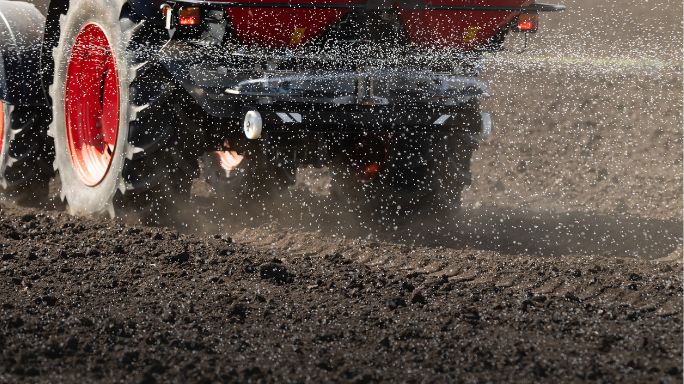Optimising Grass Output with Protected Urea

Nitrogen (N) fertiliser will be required to optimise grass output throughout the growing season.
Until recently, 70% of grazing ground had not received N due to persistent rain, waterlogged soils and poor trafficability, which limited N applications (Teagasc). Ground conditions are improving day by day, with drier conditions overall forecasted. Having N ready to go when conditions are favourable for spreading will be beneficial to drive growth to secure sufficient grass for the second rotation and first cut silage.

Protected Urea is a proven and effective Nitrogen source for both grazing and silage swards under the Irish growing conditions. It also has an added benefit of having the largest and quickest potential to reduce in greenhouse gas (GHG) and ammonia emissions within agriculture.
Trials carried out by Teagasc show that grass grown using CAN, Protected Urea and Standard Urea are similar across each fertiliser types. More recently, long term Teagasc trials consistently showed that Protected Urea grew 13% more grass on average, compared to Standard Urea. In effect, allowing to reduce the amount of N by 10% if using Protected Urea.
This is when fertiliser N is applied to soil, its aim is to supply the grass or crop with N over a period of days to weeks rather than hours. The urease inhibitor slows the rate (over period of a few days rather than a few hours) at which the urea-N converts to ammonium the conversion occurs, as would be the case with conventional urea providing a more controlled supply of Nitrogen.
As a result on a per unit of Nitrogen, Protected Urea continues to be much better value than traditional CAN products, while more expensive than standard urea as it will provide the same “effective N” for the plant as standard urea at a lower spreading rate.
|
Average price of Fertiliser Nitrogen |
|||
|
CAN 27% |
Standard Urea 46% |
Protected Urea 46% |
|
|
Kg N/tonne |
270 |
460 |
460 |
|
€/kg N |
€1.35 |
€1.05 |
€1.15 |
From an environmental perspective Protected Urea reduces ammonia N (NH3) losses by up to 80%, compared to Standard Urea and N₂O losses by 70% compared to CAN key technology for the sector in meeting its 25% reduction in GHG’s emissions by 2030.
To optimise the efficiency of Protected Urea, it is essential to balance the soil nutrients by applying the appropriate amount of lime, phosphorus, potassium and sulphur based on the results of your soil tests.
Ensuring optimal grass or crop yields while simultaneously considering environmental sustainability is a challenge for agriculture today. The spotlight has shifted towards more innovative and efficient farming practices, and the use of Protected Urea is one such advancement. It is seldom that a new technology costs less, demonstrates greater performance and delivers major environment benefits in reducing N losses.
For more information on Protected Urea, please contact your local Tirlán FarmLife Representative.
First Published 26 April 2024
Tagged with: Dairy Beef Tillage Other animals
